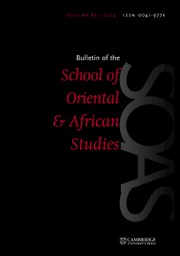Interest in the written, oral-connected literature of the Naxi (Na-khi), a Tibeto-Burman-speaking ethnic group of north-west Yunnan province, China, among those from outside China has a history dating back to the late nineteenth century. Foremost among the early inquisitors is Joseph F. Rock, whose collecting and translation activities form the bedrock of Naxi studies that continue today. At about the time Rock took interest in the Naxi textual tradition, a Dutch missionary named Elise Scharten had already transcribed and translated several pictographic texts, one of these being a version of the Coqbbertv. Although her name is relatively unknown, in the early 1920s Scharten was one of the few, “if not only”, Western speakers of Naxi (p. 21). Her translation work, executed in a dialogic method of decoding passages of pictographs with the help of Naxi dongba ritualists, pre-dates Rock's extensive translations of Naxi texts.
Over 100 years later, Poupard has worked with a much later cohort of dongba ritualists to revisit Scharten's English text and supply an alternative translation of the Coqbbertv. Poupard's re-translation offers a more robust, contextualized, and nuanced version of the myth for readers today. As such, the volume complements Poupard's recent Translation/Re-creation: Southwest Chinese Naxi Manuscripts in the West (Abingdon: Routledge, 2022), in which he charts the reception of Naxi manuscripts in the West while examining how various translators (missionaries, explorers, poets, and academics) have dealt with the inherent problem of what Lawrence Venuti has called the process of “decontextualizing” from the late nineteenth century until today (Poupard 2022: 1). Poupard's Naxi collaborators include the contemporary dongba ritualist He Guisheng and his student He Lingyu, a native language informant: both are conversant with the Naxi pinyin romanization system (used instead of the IPA system) (pp. 25–26).
A Pictographic Naxi Origin Myth provides an instructive example of Poupard's method for translating oral-connected texts from south-west China, inspired by Joseph Rock's “detailed ethnographic translations” (p. 23). The front matter includes an introduction to the nature of the pictographic Naxi script, a survey of translations of Naxi texts from the late nineteenth century to the present, and details of ritual contexts in which the sample text is orally performed. The method results in a digital recreation of each panel, the labelling of pictographs in the order in which they are read, a key to pronunciation in Naxi pinyin romanization, and a “phonetic reading of the panel itself”, followed by a multi-linear translation in word-by-word explication of each Naxi graph in English, a bilingual transcription, Scharten's original translation, and Poupard's “new, modern rendition” with its extensive exegetical notes (p. 25). There are 33 colour panels comprising the entire original Naxi manuscript from which Scharten worked that appear as an appendix, as well as an image of her original translation. A valuable addition would be an appendix containing the complete vernacular English versions of the myth standing alone, which would alleviate readers from flipping through the maze of textual registers to follow the plot.
For those unfamiliar with Naxi, the introduction provides a “rough guide” to engaging a text in a writing system “unrestrained by orthographic rules” that is incumbent upon native specialists to contextualize orally and elaborate upon the meaning of each pictograph (p. 29). Even with the guide and the ample annotations, readers face many challenges as they wrestle with the “intricate philological jigsaw puzzle” composed of logographic Naxi graphs (and at times geba syllabic graphs in a parallel Naxi script tradition) in each panel of the text (p. 29).
Given how the myth has circulated among generations of ritualists in oral-connected formats, the Coqbbertv is extant in many versions. Traditionally, the narrative is recited during ceremonies for purification (usually of a place or home), known as chelggvq (p. 37). Following the template of many origin narratives collected among diverse peoples of the Southeast Asian massif, the myth relates the origins of the sky, earth, geographical features, and living beings, a great flood sent by the sky god to destroy a morally corrupt generation of humans, and a unique marriage of the sole flood survivor, ending with the repopulating and migration of local human populations. The text details the marriage between the flood-surviving earthling Coqssei-lei'ee and Ceilheeq-bbvhbeq, the daughter of the sky god Zzee'laq-epv.
A “famous section” relates how the “father of heaven” demands 99 grains to allow his daughter to wed the earthling, but three and three halves of grain are missing (pp. 270–1). Poupard contrasts the Scharten translation with his own, the latter fleshed out by a re-reading of the pictographic passage with his dongba assistants and skilfully shaping the details of the text, such as noting the presence of Ceilheeq-bbvhbeq at her loom (lacking in the Scharten version) upon which a turtledove sits. Poupard's rendering supplies the reason the hero, with bow and arrow, inadvertently hits the bird in the crop (his elbow knocked by the weaver's movements), exposing the three missing grains demanded by the sky deity (pp. 276–7). Other details in the section, appearing minimally in Scharten's version, but explicated by Poupard and his collaborators, tell of how horse tail hair is used to constrict the waist of an ant and expose the missing three halves of grain. The contrasts between the versions depict the difficulties in rendering the logographic Naxi texts, which depend so much on the memories and interventions of traditional ritualists, to be understood and translated into other languages.
This exemplary work will be welcomed by students of Chinese ethnic minority literature, Indigenous studies, and orality and writing studies worldwide, bringing a contemporary vision to an extraordinary text of cultural and aesthetic value that serves as a gateway to other texts in the Naxi tradition and traditional texts of other minority groups of Southwest China and the Southeast Asian massif.



